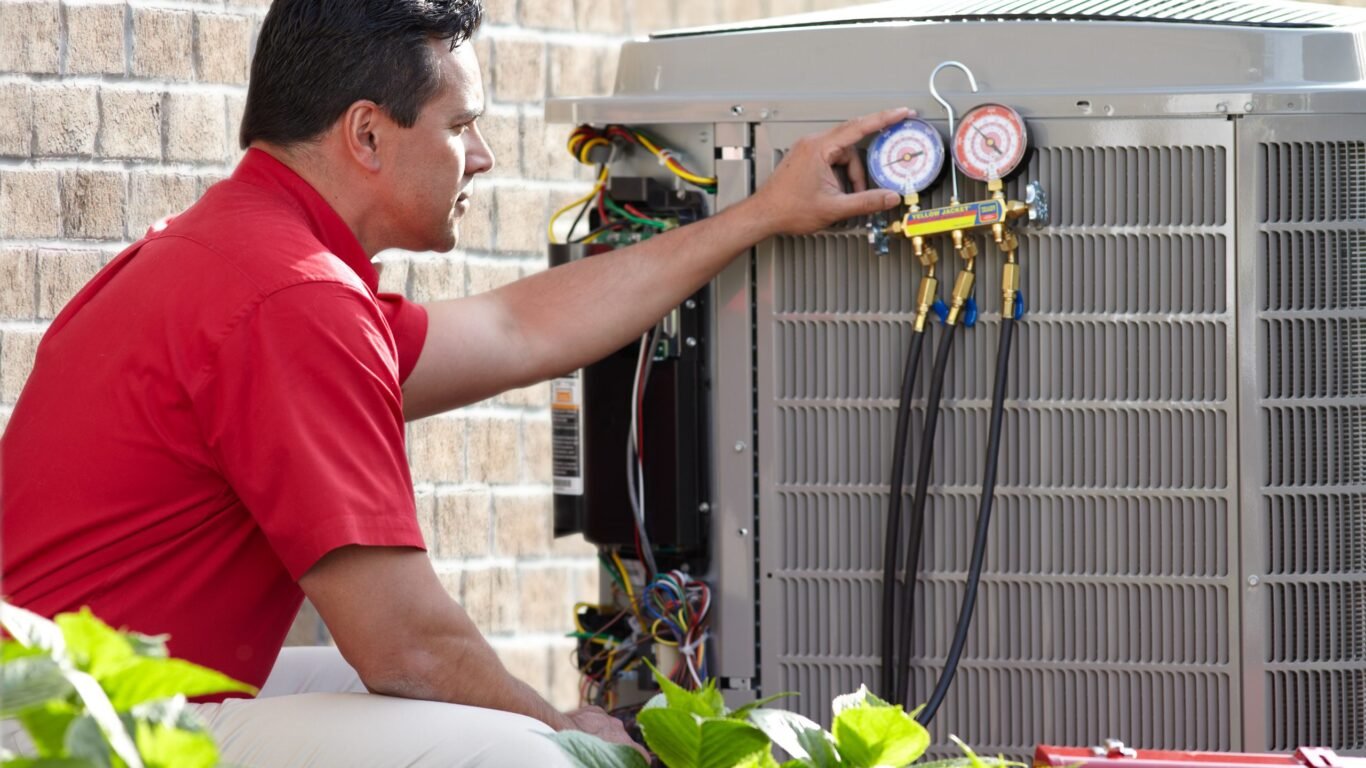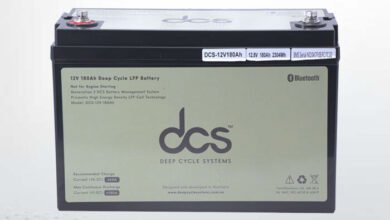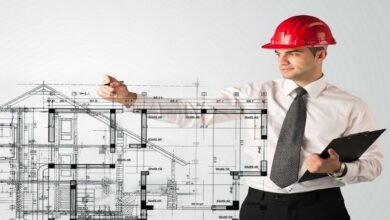Installing Exhaust Ventilation System: Steps & Considerations

Having a properly functioning ventilation system is crucial when it comes to ensuring a comfortable and healthy indoor environment. Installing a ventilation system may seem daunting, but with the proper knowledge and guidance, you can successfully navigate the process. In this blog post, we will discuss the steps and considerations involved in installing your Exhaust Ventilation System. Whether you want to work with heating & ventilation companies or tackle the installation yourself, this guide will provide the information you need to get started.
Understanding Heating & Ventilation Basics
At its core, heating & ventilation encompasses a range of systems designed to maintain indoor air quality and temperature. These systems create a comfortable living or working environment by circulating fresh air from outside into the building whilst expelling stale, contaminated air. Ventilation aids in reducing moisture, smoke, cooking odours, and airborne contaminants.
Heating systems provide warmth, which is crucial during colder months, ensuring spaces remain habitable. Understanding these fundamentals is the first step towards recognising the importance of a well-installed and maintained heating & ventilation system in safeguarding the health and comfort of indoor environments.
Choosing the Right Heating and Ventilation Companies
Selecting an adept heating & ventilation company is fundamental to ensuring your system’s successful installation and maintenance. Here are five steps to guide you through the process:
Research and Referrals
Begin with thorough research, exploring online reviews, and seeking referrals from friends or family. This initial step can provide insights into potential companies’ reliability and quality of service.
Experience and Expertise
Look for companies with a robust track record in installing the specific type of heating & ventilation unit you require. Their experience will be invaluable in addressing your project’s unique challenges.
Licences and Certifications
Verify that the company holds all necessary licences and certifications. This ensures compliance with regulations and indicates a commitment to maintaining high industry standards.
Quotations and Cost Estimates
Obtain detailed quotations from several companies. This allows you to compare costs effectively while ensuring that all aspects of the installation are covered, preventing unforeseen expenses.
Aftercare and Support
Consider the level of aftercare and customer support provided. A company that offers comprehensive maintenance and emergency repair services will help keep your system operating efficiently long-term.
Taking these steps will help you identify Heating and Ventilation Companies that meet your immediate installation needs and supports your system’s ongoing performance and efficiency.
Preparing for Ventilation System Installation
Initial preparations are paramount to ensure a smooth and efficient ventilation system installation. Begin by allocating sufficient space for the installation process, which might involve clearing the designated furniture area or other obstructions to provide easy access for the technicians. Safety should be a top priority; hence, confirm that the area is well-ventilated and that all necessary safety precautions are in place to prevent accidents during the installation.
Compile a comprehensive checklist of tools and materials based on the specific requirements of your heating & ventilation unit to avoid any delays once the work commences. If the installation is to be carried out by a professional heating & ventilation company, establish clear lines of communication to discuss any site-specific requirements or constraints.
Doing so will help ensure that both parties mutually understand the project scope, timeline, and expected outcomes. This preparatory phase is crucial for facilitating a seamless transition into the installation process, setting the stage for successful project completion.
Understanding the Installation Process of Heating & Ventilation Units
The process of installing heating & ventilation units is meticulous, comprising several stages to ensure the system operates effectively. Initially, the chosen unit must be securely mounted in its designated location, requiring precision to avoid future operational issues. Subsequently, connecting the ductwork is a critical phase; it’s here that the air pathways are established, guaranteeing efficient distribution throughout the premises. Each connection must be adequately sealed to prevent leaks and maintain the integrity of the airflow.
Finally, thoroughly testing the system is imperative to confirm everything functions as intended. This might include checking for consistent airflow, verifying that the thermostat responds accurately, and ensuring no leaks in the ductwork. During this phase, any adjustments required should be made to optimise the system’s performance. Engaging with a professional for this phase can provide peace of mind that the installation meets industry standards and operates at peak efficiency.
Assessing Your Ventilation Installation Needs
Embarking on the journey to install a ventilation system requires thoroughly evaluating your premises’ specific needs. Begin by mapping out the spatial dimensions of your property, including the total area to be ventilated and the arrangement of rooms. This initial step is pivotal in determining the scale and type of ventilation system that best suits your environment. Delve into the daily activities within the space, as areas with higher occupancy or specific functions, such as kitchens or bathrooms, may necessitate enhanced ventilation capabilities.
Additionally, contemplate the existing climate control solutions and how a new ventilation system will integrate or improve upon these. Understanding these factors not only aids in selecting the most appropriate system but also in foreseeing any potential challenges that might arise during Ventilation Installation. It’s also advantageous to consult with a professional at this stage, leveraging their expertise to ensure that your assessment aligns with the technical requirements for an efficient and effective ventilation solution.
Ventilation Ductwork Essentials
Ductwork is the backbone of an effective ventilation system, facilitating the smooth and efficient movement of air throughout a building. It’s paramount to select materials of superior quality that promise durability and resilience against wear and tear. The design and installation of ductwork demand meticulous attention to detail to ensure that the system delivers optimal performance. It must be configured to minimise airflow resistance, enhancing the system’s overall energy efficiency.
Leaks in the ductwork can significantly impede the system’s efficacy, leading to increased energy consumption and costs. Therefore, ensuring that all joints and seams are securely sealed is essential. It’s also vital to consider the insulation of ductwork, especially in areas prone to extreme temperatures, to prevent heat loss or gain. Adequate insulation contributes to maintaining the desired indoor temperature, further supporting the energy efficiency of the heating & ventilation system.
The Role of Exhaust & Ventilation Systems
Exhaust and ventilation systems play a pivotal role in ensuring indoor spaces are devoid of pollutants, excess moisture, and unpleasant odours. They operate by actively removing contaminated air from the inside and facilitating fresh air flow from the outside. This process is integral to sustaining a healthy living or working environment, especially in kitchens, bathrooms, and industrial spaces where the concentration of moisture and airborne contaminants can be significantly higher.
These systems complement heating & ventilation units by balancing indoor air quality and humidity levels, thus enhancing overall comfort and preventing the accumulation of harmful substances. The effectiveness of these systems lies in their ability to target specific areas for immediate air quality improvement, making them an indispensable component of modern ventilation strategies. Engaging with these mechanisms contributes to a comprehensive approach towards maintaining an optimal indoor atmosphere.
Ventilation System Maintenance Tips
These are fundamental yet crucial maintenance tips to ensure your ventilation system operates efficiently and prolongs its lifespan. Remember, a well-maintained system not only improves air quality but also saves on energy costs.
Regular Filter Checks and Replacements
Ensure you inspect the filters of your ventilation system every few months. A clogged filter can restrict airflow and reduce the system’s efficiency. Depending on the usage and type of filters, replacements might be necessary more frequently to maintain optimal air quality.
Duct Inspection and Cleaning
Periodically examine the ductwork for any signs of leaks, damage, or blockage. Keeping the ducts clean ensures efficient air circulation, preventing energy loss and potential health hazards from accumulated pollutants.
Fan and Motor Maintenance
The fans and motors within your ventilation system play a crucial role in its operation. Dust and dirt accumulation can hinder their performance. Regular cleaning and lubrication (if applicable) will help maintain their efficiency and longevity.
Exterior Vent Clearing
Make sure your system’s external vents are not obstructed by debris, foliage, or other materials. An unblocked exterior vent is essential for maintaining proper airflow and system effectiveness.
Professional Check-ups
Despite regular personal maintenance, it is advisable to have your system checked by a professional at least once a year. They can perform a comprehensive assessment, including testing for carbon monoxide and ensuring the system adheres to safety standards.
Common Problems and Solutions in Heating & Ventilation
Encountering difficulties with heating & ventilation systems is not uncommon, and identifying these issues early can prevent more significant complications later on. Reduced airflow might signal blocked filters or ducts, necessitating a thorough cleaning or replacement to restore efficiency. Unusual noises from the unit could indicate loose components or obstructions, requiring a detailed inspection and tightening of any loose parts. Disparities in heating or cooling across different areas often point towards issues with the system’s distribution network, possibly requiring recalibration of dampers or adjustment of system controls.
It’s also critical to check for leaks in the ductwork, as these can significantly impair the system’s performance and lead to increased energy consumption. Should these problems persist, seeking the expertise of a professional is advised to diagnose and rectify the issue effectively. Timely intervention can save energy and costs, ensuring the system functions optimally and maintains a comfortable indoor environment.
Types of Heating and Ventilation Unit
Navigating the diverse range of Heating and Ventilation Unit on the market requires a detailed understanding of each system’s unique benefits and limitations.
- Central heating systems, favoured for their ability to provide uniform heat distribution across multiple rooms, are a popular choice for more significant properties.
- Heat pumps offer an energy-efficient alternative, harnessing the outside air to heat and cool spaces, making them a cost-effective solution for moderate climates.
- Ductless mini-split systems, on the other hand, allow for targeted heating and cooling without the need for extensive ductwork, ideal for renovations or extensions where installing new ducts is impractical.
Each type of system presents a distinct set of characteristics, from installation requirements to operational efficiencies, necessitating careful consideration to align with your environment’s specific demands and budgetary constraints. Engaging with these options empowers homeowners and business operators alike to make educated decisions, ultimately selecting a heating & ventilation unit that promises to meet their long-term comfort and air quality objectives.
Energy Efficiency and Your Ventilation System
Optimising energy efficiency is paramount when considering your ventilation system. Opt for units renowned for their energy-saving credentials, and ensure they are correctly proportioned to your space to avoid unnecessary energy consumption. Programmable thermostats can facilitate more controlled heating and cooling, allowing for adjustments based on occupancy and time of day, thereby significantly reducing wastage.
Effective insulation of your property can also play a critical role in enhancing energy efficiency, as well-secured buildings require less energy to maintain a comfortable temperature. Additionally, addressing any leaks in the system early on can prevent loss of warm or cool air, ensuring your unit operates as efficiently as possible. Taking these measures contributes to environmental sustainability and leads to considerable savings on energy bills, underlining the importance of integrating energy-efficient practices into your heating & ventilation strategy.
Future Trends in Heating and Ventilation Technology
The heating and ventilation sector is on the cusp of transformative advancements, propelled by the fusion of technology and environmental consciousness. Innovations such as IoT-enabled devices are set to revolutionise how we manage indoor climates, allowing unprecedented precision in controlling temperature and air quality. Smart thermostats, which learn from our habits and adjust settings for optimum comfort and energy efficiency, are becoming increasingly commonplace. Moreover, zoning systems can independently regulate temperatures in different areas of a building, ensuring both comfort and energy savings.
Another exciting development is the rise of energy recovery ventilators (ERVs), which improve air quality while minimising energy loss, embodying the drive towards greener living spaces. These technologies promise enhanced comfort and healthier environments and signify a step forward in our quest for sustainability, highlighting the sector’s commitment to reducing carbon footprints. As these trends gain momentum, staying abreast of these innovations will be crucial for anyone looking to modernise their heating and ventilation systems.
Conclusion
In summary, the journey to installing and maintaining an efficient Exhaust Ventilation System is multifaceted, encompassing a variety of considerations, from selecting the right unit and company to understanding the importance of regular maintenance. By taking informed steps and staying abreast of future trends, individuals can ensure their systems contribute to a healthier indoor environment and embrace energy efficiency and sustainability. As technology evolves, the potential for enhanced comfort and environmental responsibility within our homes and workplaces becomes ever more achievable.
FAQ’s
1. What is the best type of Heating and Ventilation Unit for my home?
The ideal Heating and Ventilation Unit depends on your property’s size, climate, and specific needs. Central heating systems are suited for larger spaces, heat pumps are energy-efficient for moderate temperatures, and ductless mini-splits cater to particular areas without extensive ductwork.
2. How often should I perform maintenance on my ventilation system?
It’s recommended to check and replace or clean air filters every three months, with a comprehensive system check-up by a professional at least once a year to ensure optimal performance and prevent potential issues.
3. Can I install a heating & ventilation system myself?
While some aspects of the installation could be DIY, professional installation is advised for efficiency, safety, and compliance with regulations. It ensures the system is installed correctly and operates at peak performance.
4. How can I improve the energy efficiency of my heating & ventilation system?
Opting for energy-efficient units, ensuring proper property insulation, and using programmable thermostats can significantly reduce energy consumption. Regular maintenance to prevent leaks and blockages is also crucial.
5. What are the signs that my ventilation system needs repair or replacement?
Reduced airflow, unusual noises, uneven heating or cooling, and increased energy bills can indicate that your system requires attention. Early intervention by a professional can prevent more significant issues and ensure your system’s longevity.
| Related Business Listings |
| Contact Directory |
| Local Business Profiles |




